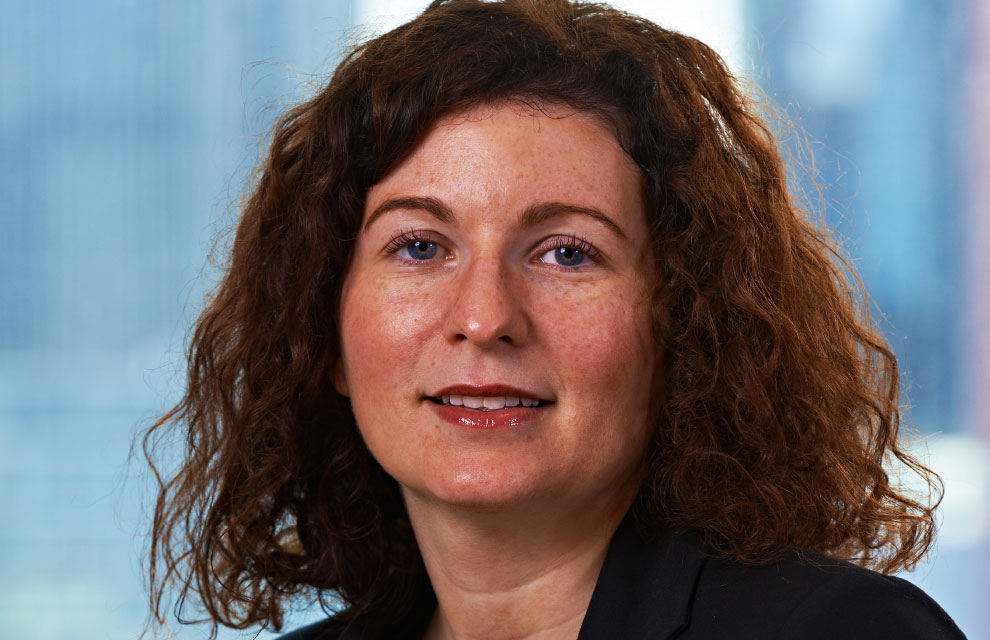MarketAxess
Camille McKelvey
08 June 2021
Camille McKelvey, head of post-trade STP business development at MarketAxess, tells Justin Lawson about the company’s advances in US repo markets, recent acquisitions and industry-level initiatives to promote diversity and inclusion
 Image: Camille McKelvey
Image: Camille McKelvey
You lead the straight-through processing (STP) business development team, focusing on delivering post-trade efficiency across the fixed income cash and repo markets. What has been the biggest challenge over the past year?
What a year! We have all come across new challenges in the last 12 months, particularly when faced with working from home. We had to set up 10,000 users remotely in a very short time. It hasn’t been easy, but it is great to see what we have achieved as an industry.
This is a pivotal time. The introduction of SFTR and upcoming implementation of CSDR are driving even more changes. But where there is a challenge, there is also an opportunity! Especially when it comes to embracing technology and reviewing existing processes, now is the time to start being more visionary and to rethink traditional ways of operating.
Citadel and J.P. Morgan led the way in the US by extending their existing use of MarketAxess’ trade confirmation engine outside of Europe. How do you rate your efforts to take on the US market?
Building a community is never easy, but the US repo market was crying out for more post-trade automation!
Having a core group of early adopters has absolutely been key to our success and we now see a significant amount of US-centric volume through the platform. The majority of US Treasuries sent in are for same-day settlement, so having a real-time confirmation layer is key to mitigating fails that lead to costly Treasury Market Practice Group (TMPG) charges.
We continue to add global clients to our ever-growing community and expect this trend to continue throughout 2021 and beyond. There is still a lot to do to automate this market!
Daily volumes on your post-trade repo platform have risen significantly. What is your key to success?
Firms have spent years discussing operating challenges and the opportunity to automate, but limited resources often constrain this. Last year, 2020, was effectively a live technology experiment — it forced change. The combination of the pandemic and the pressure of regulatory change has contributed to increased automation — MarketAxess Repo matched trade average daily volumes increased 94 per cent YoY to $110 billion in Q1 2021.
MarketAxess acquired the Regulatory Reporting Hub, the regulatory reporting business of Deutsche Börse Group, at the end of last year. How has the integration of this business unit gone?
It’s an exciting time. The acquisition is a firm demonstration of our long-term commitment to building our regulatory reporting infrastructure across Europe and we’re working closely with these clients to support them through the transition to MarketAxess services. Over the next 12 months, we will continue to extend the full front-to-back trade lifecycle services that we offer, from trading and data through to matching and regulatory compliance.
Regulation seems never-ending. What regulations are posing the biggest challenges for the industry and giving clients sleepless nights?
New regulation is often seen as a positive force for change — despite sometimes challenging periods of transition. The Securities Financing Transactions Regulation (SFTR) and the Central Securities Depository Regulation (CSDR) are raising the profile of risks associated with not having an efficient trade confirmation solution — but there is still work to do to prevent sleepless nights!
The biggest focus for firms in the next few months must be to review existing processes. Getting under the skin of current settlement efficiency rates is vital. There is time to close gaps and address potential weaknesses now ahead of the regulation going live.
Tell us about the scope of the CSDR Settlement Discipline Regime. Who is in scope with this and what is the main objective for the regulation?
CSDR is all about improving settlement rates, but contrary to its naming convention it is not just a regulation for CSDs. The potential impact will reach every single participant executing securities across fixed income, repo and equity transactions that settle in a European depository. That is a significant number.
Settlement penalties are due to be introduced in February 2022. This will have a global impact for any party failing to settle a transaction in a European CSD, irrespective of where the trading party is domiciled. Unlike some of its predecessors like MiFID II, where the location was the driver to inclusion in scope, this is about where the trade settles. If this happens to be a European depository, then no matter where you are you will be impacted. So, if you’re in Asia trading with an entity in Australia, but trading a security that settles in Europe, you are in scope.
What steps should organisations take to become more efficient in the lead up to implementation of the CSDR settlement discipline regime? How can they get ahead?
Ahead of the February 2022 implementation, we urge firms to put measures in place today that will help improve efficiency — and there needs to be a focus on post-trade processes. The most important preparatory step is to come together as an industry. The whole world settles securities trades in European depositories, and with less than nine months to go, there is still a lot of work to do.
Settlement penalties will drive a change in behaviour, but we all have a responsibility. Engage with trade associations. Speak to clients. Share experiences with counterparties. And agree on best practice without delay.
Please update us on the important work you have been doing on the steering committee of the ICMA Women’s Network.
The ICMA Women’s Network now has more than 2000 members — something I am very proud of. This is a big change compared to where we started. We now have regional hubs around Europe and we’re looking to expand further.
The network acknowledges that, although things are improving, we have work to do as an industry. Men must also be a part of this conversation. MarketAxess is a great champion of initiatives to drive change in this area.
Everyone, regardless of background, should see a career in financial services as a realistic possibility. At the start of my career, I had to get used to being the only female voice in the room. It’s great to see change happening. Our latest intern programme is 50 per cent female. This demonstrates that there has been a tangible shift.
← Previous interview
Standard Chartered
Madeleine Senior
Next interview →
CIBC Mellon
Rob Ferguson
 Image: Camille McKelvey
Image: Camille McKelvey 